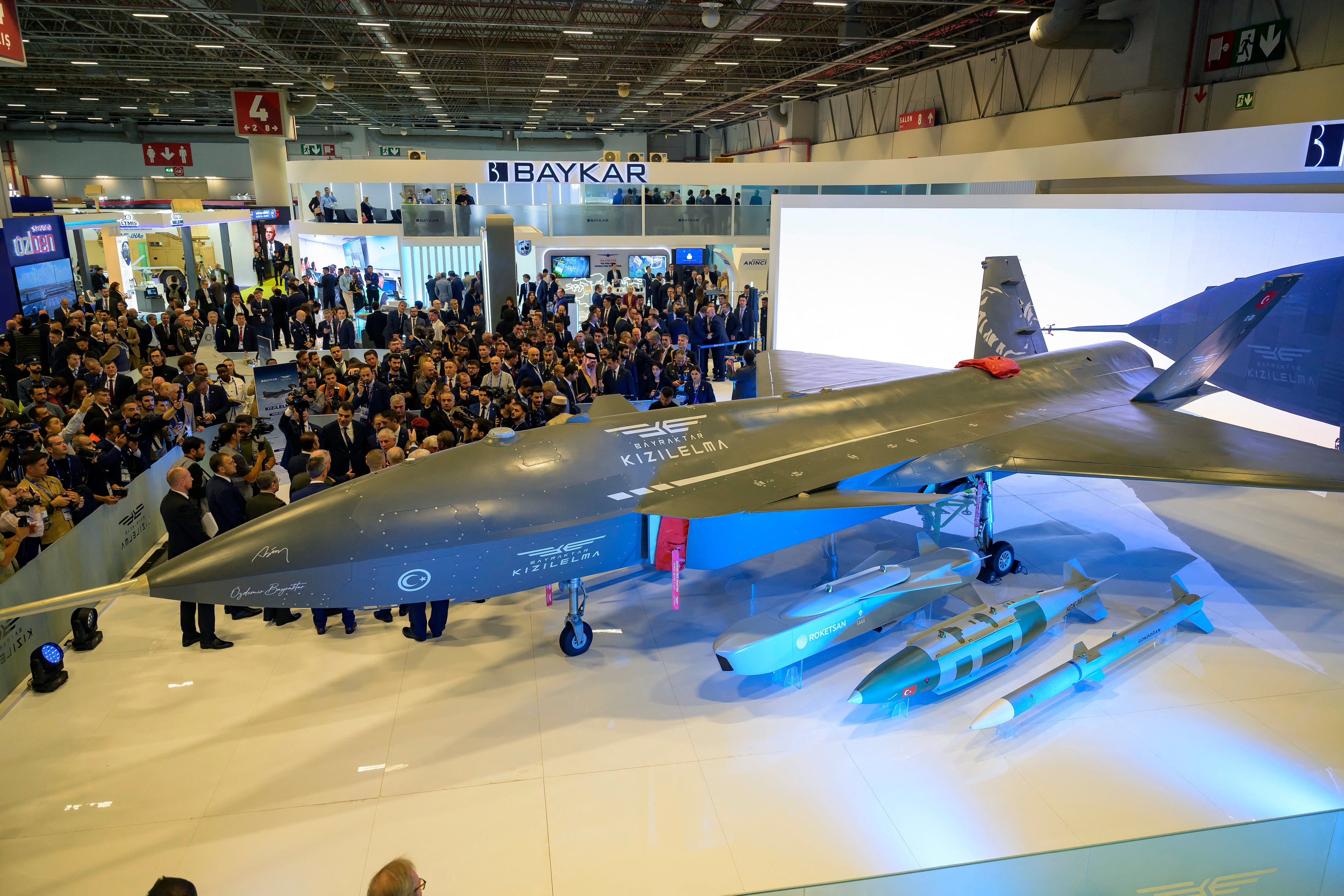Beneath the rictus grin of the plastic owl-shaped robot, Russia’s military future can be seen in aggregate. The federation showcased a range of vehicles and robots over the course of the Army 2019 Expo in June, and the net effect is of a nation engineering its way back into military modernity. The components of that military are already on the showroom floor. The challenge will be one, now, of implementation.
“No doubt, the breakout ‘star’ was the UAV in the shape of an owl, made by ERA technopolis,” said Samuel Bendett, an adviser at the Center for Naval Analyses. “Its goal was to “fly mimicking the flight of birds, not in a line, but in a way that most closely approximates this predator in order to get as close as possible to the target.”
The owl drone’s iconic experience lent it well to popularity on social media, but it’s worth noting the process that went into it. This year’s owl is an iteration on a much less realistic looking owl drone, and its camouflage matches the imagined needs of the future: passing just enough to avoid casual detection, as they aid in hunting tanks in forests and plains where owls are common.
“Most of the UAVs on display were smaller in size, though many models presented had the capacity to deliver munitions,” said Bendett, a fellow in Russia studies at the American Foreign Policy Council. While the owls drones anticipate battles closer to the Russian interior, many of the ground robots on display showed design features that drew from recent battlefield experience. These experiences are also shaping the software that goes into robots.
“Russian developers displayed one finished product resulting from its years-long quest for swarming applications — small ‘Som’ UAV that can fly based on the ‘Staya’ [Flock] application,” said Bendett, noting the manufacturers claim that this swarm application could be used for “an unlimited number of drones.”
If that claim seems ambitious, it’s one common in talking about the potential of swarms across the nations and countries that are developing them. Intel, the microchip manufacturer, has a pattern of incrementally breaking its own drone swarm records, suggesting the scale problem is one that can be iterated around (though “unlimited” is still a staggering number to posit).
“But perhaps the most significant development was the admission by Defense Minister Shoigu that Russia’s military-industrial complex is almost done with the ‘import-substitution drive,’ and that key parts of the defense industry no longer depend on imports,” said Bendett. “Shoigu stressed that many exhibitors started their presentation by stating that a given technology is made with domestic components, ‘We were forced to manufacture these components on our own, restarting or jump-starting industries there were either closed or under-invested.'”
In Bendett’s reading of Russian analysis, Western sanctions delayed certain systems, but the Ministry of Defence is arguing that domestic industry was able to step up and replace the once-imported components. In this import-substitution drive, Shoigu claims that Russia was able to separate the wheat from the chaff in its defense companies, closing or consolidating the ones that were unable to deliver. The net effect is arguing that, while Russian drones may initially have relied on imported components, they no longer need to do so, or at least do so as heavily.
“Here is a perfect example of how this is supposed to work: ERA technopolis exhibited a micro-UAV — a small quadrocopter for tactical ISR, especially for the nation’s special forces,” said Bendett. “According to the designers, it is currently made from imported components, but ERA reps said this particular UAV is a proof of concept that could eventually be made from domestic parts. They also discussed developing an ‘intelligent swarm’ program to direct groups of these UAVs.”
That there is an international commercial marketplace for drones and drone components no doubt helps this modernization drive. But the image Russia wanted to project, more than anything else, is one where that modern technology fuels domestic innovation. It remains to be seen if the software can live up to that promise, but the airframes are ready.
Kelsey Atherton blogs about military technology for C4ISRNET, Fifth Domain, Defense News, and Military Times. He previously wrote for Popular Science, and also created, solicited, and edited content for a group blog on political science fiction and international security.








